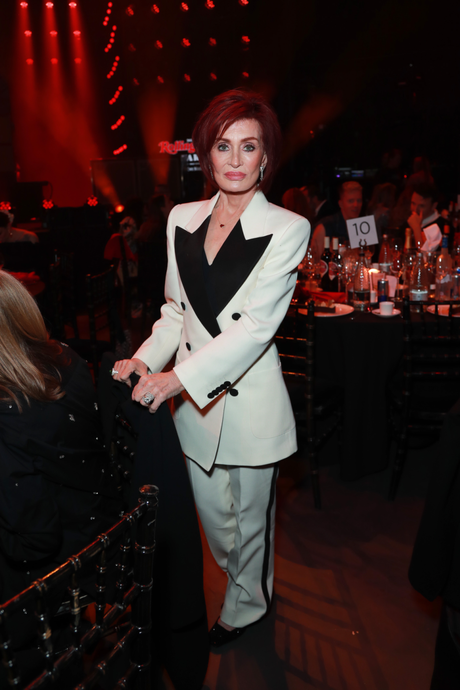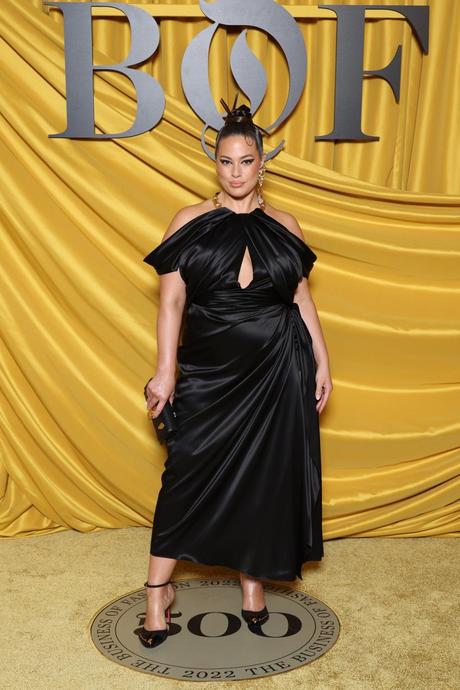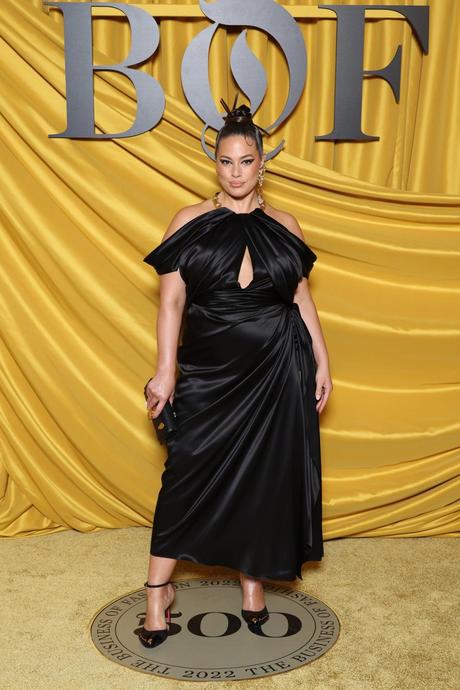
During October's Paris Fashion Week, I found a surreal offering in my hotel minibar. Next to a bottle of Tattinger and Badoit sparkling water was a 1 mg Ozempic pen. At €3,000 a night, I thought it was a hellish freebie for the VIP fashion clientele - a dystopian assumption, yes - but not unfounded.
The fashion industry is bloated with users. An example of this is the luxury fashion brand consultant who takes Ozempic and has gone from size 10 to six. "I try to be body positive, but it's hard when people treat you so much better when you're skinnier," they say. "I hear conversations all the time where someone complains that a model is too big, or praises someone who looks practically skeletal. There is an unspoken pressure from the overwhelming barrage of thinness on runways and in campaigns."
Originally intended as a treatment for type 2 diabetes, Ozempic's active ingredient semaglutide lowers blood sugar levels and regulates insulin. It does this by imitating a naturally occurring hormone called GLP-1, which slows stomach emptying and curbs hunger - preventing spikes in blood sugar levels. Among the many unpleasant side effects, from intense nausea to abdominal pain, users also found that the injectable drug administered once a week resulted in rapid, unintentional weight loss.


In 2018, the U.S. Food and Drug Administration began testing semaglutide to treat obesity, and in 2021 its sister brand Wegovy (which contains a slightly higher dose of semaglutide) was officially approved as a weight loss drug. Today, many healthcare professionals will prescribe Ozempic off-label, but only to people with a BMI over 30 or who have conditions that make it difficult to lose weight naturally. But its ability to suppress your appetite has led many to go to great lengths to obtain the mythical drug. "A large part of the fashion community is working on it. Not even just people looking out, like celebrities or models [but] PRs, stylists, editors," says Jeanie Annan-Lewin, stylist and creative director of Perfect Magazine.
The story continues
She has been taking Ozempic for the past eight months. As a plus-size woman with polycystic ovarian syndrome, Annan Lewin recently wrote a personal essay for Elle about the drug's prevalence in the fashion industry, especially among those for whom it was not intended. "I just found it everywhere I went, for weeks and weeks and weeks," she explains. "I was shocked and people took the liberty of saying they were using it because I think it's a pretty serious drug. Yet it would be mentioned in the same breath as a 'Where are you going on holiday now' conversation by someone no bigger than a size 10.
For an industry that benefits from uncertainties, it's no surprise that Ozempic has found a bedfellow in fashion. It is seen as an ideal accessory for dinners in fine restaurants, where the food is depressingly picked. If weight were currency, then thin is power. Just take the word of these insiders. "Sports is modern couture. No outfit makes you look or feel as good as a fit body." (Rick Owens). "No one wants to see curvy models" (Karl Lagerfeld). And of course, "Nothing tastes as good as lean feels" (Kate Moss).
The 90s and 90s had a fixation on dangerously thin models, but haven't we gotten rid of that? In recent years we have witnessed the rise of models such as Paloma Elsesser, Precious Lee and Ashley Graham. The headlines heralded a new era of you-do-your-body positivity. But among the viral runway moments and one-off plus-size covers, accusations of tokenism are rife. "There are people who said to me, 'You have to lose weight.' People who have erased my stretch marks on the screen for me, who have pinched my waist and raised my tits," Graham told the Sunday Times earlier this year of her experience of entrenched attitudes towards curvier figures in the industry.
When Elsesser iD magazine featured Miu Miu's cult short-skirted mini-skirt, it was later revealed that it had been cut and a piece of fabric added to make it fit. The industry's embrace of curvier bodies is a literal illusion. Then Kim Kardashian lost 16 pounds in three weeks to fit into her 2022 Met Gala dress. Soon after, Hollywood witnessed other drastic celebrity weight loss, from Elon Musk to the cast of Real Housewives of New York. Sharon Osbourne and Robbie Williams both recently admitted to using it. On TikTok, #Ozempic has been viewed more than 1.3 billion times, largely due to users' alarming transformation videos before and after Ozempic.


Combine this with the Y2K trends designed for ultra-slim frames, such as low-waisted jeans and cut-out dresses, creating a worrying return to the trend cycle - and it becomes clear how deeply entrenched the skinny bias is. "I hesitated for so long," says a private supplier, who wished to remain anonymous, when he decided to sell Ozempic, through an alarming process. "I wasn't interested in being a part of it because I just didn't know how it would affect people," she continues. "I get it through a third party, so it's not technically my place to sell it," they say. "I have a relationship with a pharmacy with whom I work closely for my vitamins and my intravenous medications. Every week they send me a stock overview, and I am free to sell whatever I want."
When ordering via Instagram Stories and DMs, potential buyers will receive a message with all the information they need to know, which they will then need to sign. Payments are made, pens are shipped. No prescription is required. "I know someone who sells it to a lot of fashion people like this and has had to close the list because it's too well known," Annan-Lewin confirms.
I first started selling the pens for £150. Now they cost £295. A girl took eight of them from me because she couldn't find them anywhere
"I started selling the pens for £150. Now they cost £295," the private supplier continues, citing the global shortage due to rising demand. "Yesterday I had a girl take eight of them off because she was on it for about three months and when she got to the end of her cage she couldn't find it anywhere." Throughout the year they have also noticed that more and more people want it, who are not overweight and have no health problems. "I have a client who works in the archives field, and everything is size zero. She took it because she wanted to wear the clothes."
"I know so many people who have jumped on this bandwagon," agrees Lucy Maguire, senior trends editor at Vogue Business. "It's a strange dichotomy and it's turned out that maybe everyone is saying, 'Yes, we want to welcome all sizes in fashion. Yes, we want to be size inclusive." But deep down there is a lot of internalized fatphobia in the fashion industry."


Maguire recently contributed to Vogue's annual Business Size Inclusivity Report, which found that less than one percent of models were plus size this fashion season. "The catwalk show is such a purely traditional form of fashion communication that it is seen as the pinnacle of brand expression," she continues. "It's a huge arena because of the sheer amount of eyeballs around the world in that one moment. You get that completely undivided attention on you."
As a result, Maguire says most people see the catwalk show as the main place for change. "At a fashion show there are so many opportunities for them to show us diversity and inclusivity. "If they send 30 models onto the catwalk and they are all the same size, it becomes even grimmer," she adds, noting how disappointing it was to see that only 17 of the 219 brands featured in all four fashion capitals shown, a plus-size look in their spring/summer 2024 collections.
We have arrived at an interesting crossroads. "Instead of asking yourself, 'Why am I at a dinner party and people are talking about these things?' It seems like people are saying, 'Well, I can just lose 10 pounds and then fit into society's norms and feel better,'" says Annan-Lewin. This newfound enchantment with thin appears to be part of a mass hysteria caused by a so-called 'miracle drug' that plays on our deepest insecurities. Ozempic feels like the ultimate test of fashion's commitment to an authentically inclusive future.
